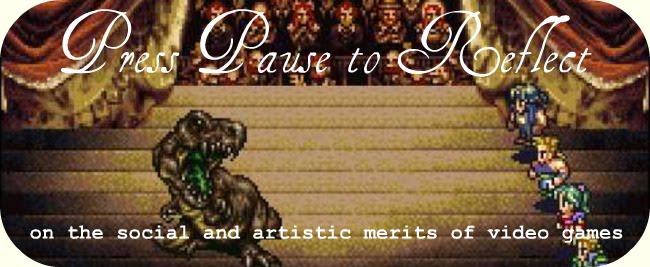by Daniel Bullard-Bates It seems fairly evident that one day the uncanny valley will be left behind, and technology will be able to provide visuals to rival or even surpass reality. This may even be possible in the very near future. For the moment, however, technology falls just short, stuck deep in the uncanny valley, offering up hollow stares, awkwardly-pointed cheekbones, and oddly off-kilter mouths spouting their ill-fitting dialogue like actors in a badly-dubbed Godzilla movie.
It seems fairly evident that one day the uncanny valley will be left behind, and technology will be able to provide visuals to rival or even surpass reality. This may even be possible in the very near future. For the moment, however, technology falls just short, stuck deep in the uncanny valley, offering up hollow stares, awkwardly-pointed cheekbones, and oddly off-kilter mouths spouting their ill-fitting dialogue like actors in a badly-dubbed Godzilla movie.
Games that attempt a realistic approach to character design and environments tend to hold up poorly over time. Looking back at older games once revered for their incredible modern graphics and realistic character models is always a strange experience: what looked amazing to us when we were younger looks strange, blocky and off-putting when compared to the most recent games. Games like Final Fantasy VII and Metal Gear Solid, games that wowed with their visuals in the original Playstation era, look fairly ridiculous now. Even more recent games like Grand Theft Auto: San Andreas look bizarre when compared with last year’s Grand Theft Auto IV. Of course this is true of most games: more recent technology yields better graphics, but this is particularly evident with games that choose a realistic style over a heavily stylized artistic take.
Even more recent games like Grand Theft Auto: San Andreas look bizarre when compared with last year’s Grand Theft Auto IV. Of course this is true of most games: more recent technology yields better graphics, but this is particularly evident with games that choose a realistic style over a heavily stylized artistic take.
 Super Mario Galaxy and Metroid Prime 3: Corruption to make games with stronger, more appealing visuals than many of the games released on the more-powerful Xbox 360 and PS3. In five or ten years time, those games will still look good, while “realistic” games like Call of Duty 4 will likely seem dated and unattractive.
Super Mario Galaxy and Metroid Prime 3: Corruption to make games with stronger, more appealing visuals than many of the games released on the more-powerful Xbox 360 and PS3. In five or ten years time, those games will still look good, while “realistic” games like Call of Duty 4 will likely seem dated and unattractive. 
The people behind Borderlands made the risky choice of changing their art style completely fairly late in the development process, and that decision was the best they could have possibly made. Instead of releasing a fairly generic looking shooter, their game has a beautiful, comic-book-like quality to it which makes it infinitely more appealing. And ten years down the line, Borderlands will still look great, even when Fallout 5 is showing us how much more realistic it is than all that has come before.
 So let this be a lesson to you, developers: make something that looks closer to reality than the last game, and you’ll wow the audiences of today. Make something that just looks great, and you’ll impress audiences for years and years to come.
So let this be a lesson to you, developers: make something that looks closer to reality than the last game, and you’ll wow the audiences of today. Make something that just looks great, and you’ll impress audiences for years and years to come. 








